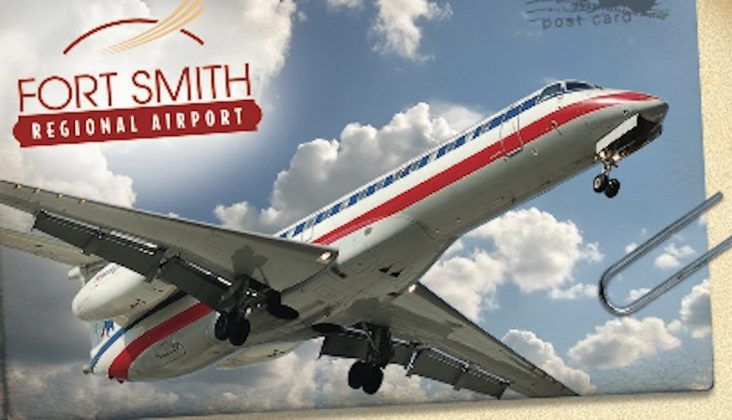Longer runway, economic development could be part of Fort Smith airport master plan
by May 28, 2019 5:47 pm 1,831 views

Fort Smith Regional Airport officials have been presented four alternatives to lengthening the main runway as part of a process to complete a new master plan for the facility.
Lee’s Summit, Mo.-based Coffman Associates also presented other steps to improve the airport at a public open house held May 24. The presentation of alternatives is the second step in the airport’s master plan, which should be completed later this year. The Federal Aviation Administration (FAA) recommends airports complete a new master plan every seven to 10 years. Fort Smith’s last master plan was completed in 2006, according to Eric Pfeifer with Coffman Associates.
“That’s not abnormal,” he said. “But it is really good that they are doing one now.”
The Fort Smith Airport Commission initiated the master plan in the fall of 2018 to “properly plan for the timely development of the airport to ensure its continued viability from a functional, social, and environmental perspective,” information on Coffman’s website said. “The Master Plan will provide the airport with a comprehensive overview of the airport’s needs over the next 20-year time period, including a preferred development plan, costs for this development, methods of financing, management options, and a clear plan of action.”
After doing an inventory of the airport, Coffman came up with a forecast, which was presented in December. That forecast projected out 20 years based on national aviation trends, socioeconomic growth, population growth and potential to grow. The majority of Fort Smith’s growth will most likely be in general aviation, not commercial aircraft, Pfeifer said. The growth in based airplanes will be in the more sophisticated aircraft, such as jets and helicopters, he said.
“We do see a very small growth potential in small piston planes, but not much at all. And that follows a national trend,” Pfeifer said. “We’re not seeing many piston aircraft being manufactured.”
Looking at those forecasts compared to existing conditions and determined needs, Coffman developed alternatives that could help the airport continue to serve Fort Smith over the next 20 years, Pfeifer said.
“What we want to translate that (forecasted growth) into is what sort of facility needs will you need to meet that,” he said.
On that front the Fort Smith airport looks good.
“So, actually the airfield, the terminal building, a lot of the facilities the airport has are in great condition and are able to meet a lot of the future demands that we identified,” Pfeifer said.
One key aspect the airport might need to consider is a longer runway.
“Specifically, on the airfield we are evaluating some potential runway extensions based on a potential need, not an existing need, for a lot of the heavier aircraft particularly during hotter summer periods. Airplanes need longer distant to take off in hotter summer months,” he said.
The alternatives presented show four plans for adding to the main runway, adding to the length of the runway at the east, the west and combinations of those.
“What this [the alternatives] does is highlight some of the issues,” Pfeifer said.
For example, taking the extension to the east would affect the Fort Smith Dog Park. To the west there are issues with Interstate 540. Other alternatives suggested to the planning advisory committee through the Phase 3 presentation included extending the cross runway, so it can be used as alternative runway if the primary runway is down for rehabilitation or other reasons, and what to do with land surrounding the airport.
Different alternatives look at extra hangars, taxi space and commercial or large-scale aviation-related industry, such as a repair or overhaul facility, and additional acreage the airport might need, he said.
“One alternative looks at maybe acquiring 40 more acres. One looks at the possibility of 200 acres for the airport to do a large-scale commercial or industrial plan that would tie in with the railroad,” he said.
Coffman Associates will take feedback from the advisory committee on the alternatives presented and get to work on recommendations for the airport, Pfeifer said. That report should be presented in the next three to four months and will include a recommended concept, environmental overview and financial plan. Once that is approved, they will prepare a master plan draft, which will take an additional one to two months.
“We should have a draft within six month that will then be presented to the FAA for approval. That approval can take three to six months,” he said.
